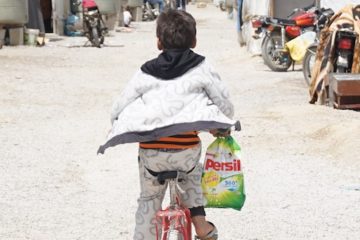December 14, 2018
According to the United Nations Office for the Coordination of Humanitarian Affairs (OCHA), more than 13 million people inside Syria are in dire need of humanitarian assistance. The ever-growing needs, combined with the protracted nature of the Syrian conflict and refugee crisis, have led to significant gaps in funding for Syria and the surrounding countries.
Current Funding Gap:
The Global Humanitarian Overview (GHO), published by the UN, is the most comprehensive assessment of the world’s humanitarian needs. This year, it released the largest funding appeal in the organization’s history, but still only addresses the needs of 91 million of the world’s 135.7 million refugees.
Funding gaps are most acute in Lebanon and Jordan, which host the highest and second-highest share of Syrian refugees as a percentage of their population. UNHCR reports that Jordan has received 21% of its initial fundraising targets, while Lebanon has received only 12%. In the health sector, SAMS notes that the needs in these two countries are most pressing in the provision of care for chronic conditions, such as diabetes, heart conditions, and cancer.
Inside Syria itself, OCHA lists the top three humanitarian priorities as 1) survival for the most vulnerable, 2) the protection of civilians, and 3) the provision of livelihoods and essential services. The health sector is a key element in the provision of essential services. SAMS notes that the top priority in the health sector in Syria is supporting primary care facilities and hospitals. With 492 attacks on healthcare and the death of 847 medical personnel from 2011-2017, this is no easy task. The sheer amount of funding required to renovate and equip hospitals and clinics, train doctors and other medical personnel, and provide medication and supplies is quickly outpacing the amount of funding available.
In 2018, humanitarian organizations increased their fundraising targets to adjust for growing humanitarian needs. Humanitarian organizations asked donors for $5.6 billion in 2018 to support roughly 5.5 million Syrian refugees in neighboring countries as well as an additional 4 million vulnerable nationals from hosts countries. However, halfway through the year, less than 22% of that funding has been collected.
The Cost of Cutting Funds:
Without the rest of these funds, a number of humanitarian and medical services for Syrian citizens and refugees are continually at risk of being cut off completely. This includes safe water and sanitation, access to healthcare and essential nutrition treatments for children, distribution of clothing and blankets in the winter months, and cash assistance for families.
Financial resources within host countries have already begun to wane, making Syrian refugees in particular entirely depending on international assistance. As donations for these programs also fall far short of the need, millions are stuck in increasingly dire situations.
Impacting Lives Today:
The Regional Refugee & Resilience Plan (3RP), which supports Syrian refugees and vulnerable host communities in Jordan, Lebanon, Turkey, Iraq and Egypt, is already falling behind on cash assistance and health services because of lack of funding. More than 200 partners in the 3RP have called on the international community to deliver on their pledges.
If funds are not donated soon, 130,000 families will lose cash assistance immediately; monthly food vouchers are likely to disappear altogether; water and sanitation services will be in jeopardy; and up to 1.7 million people will face winter without fuel, shelter, insulation or proper clothing. All of which have severe health consequences will be exacerbated by further funding gaps in Syrian health programs. According to OCHA’s Financial Tracking Service, the health sector inside Syria has received less than half of the funding it needs, with an appeal for $436,624,470 and the level of unmet funding at $272,012,449.
Looking to the Future:
Now more than ever, individual, foundation, and government support is vital to ensure lifesaving medical care is accessible to all. According to OCHA’s 2018 Humanitarian Needs Overview, 46% of Syria’s public hospitals are damaged and 99,000 services are disrupted each month, and over 11 million people need medical services, which includes 3 million individuals living with injuries and disabilities. These numbers do not even account for the over 5.5 million Syrians displaced into neighboring countries.
SAMS believes in providing quality, life saving medical services to those within Syria, neighboring countries, and abroad. But without funding support, SAMS like other aid organizations will be forced to narrow their scope.
The conflict in Syria remains the largest population displacement since World War II, which took years of international cooperation and billions of dollars to recovery. The UN’s latest appeal is no idle number generated to increase its activities; it is the bare minimum needed to provide lifesaving care and resources to those in greatest need today.







